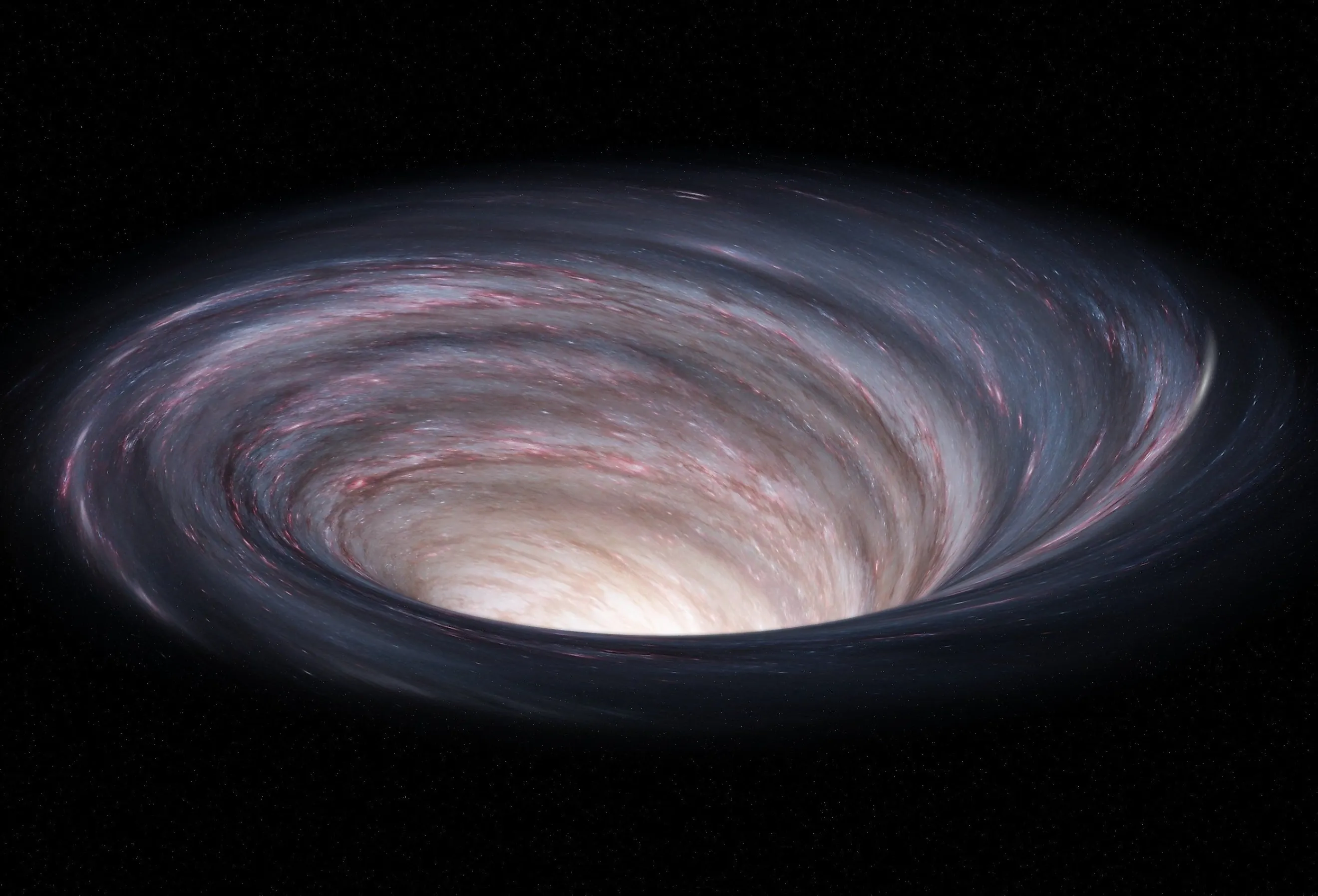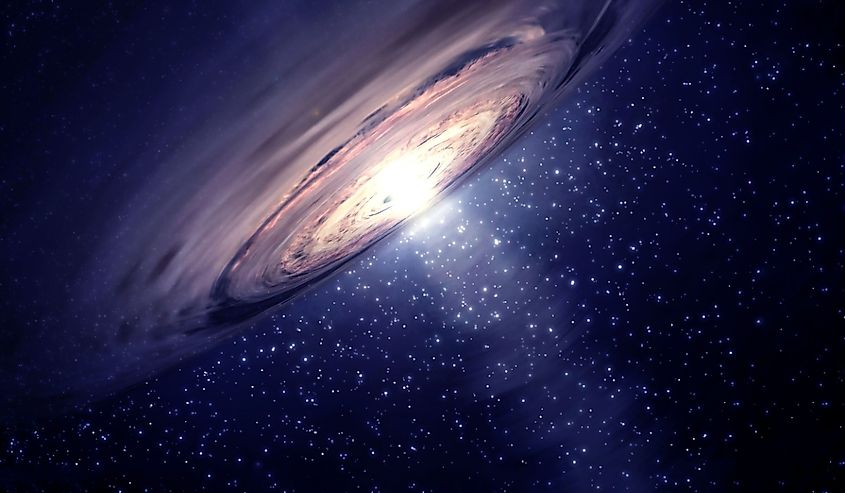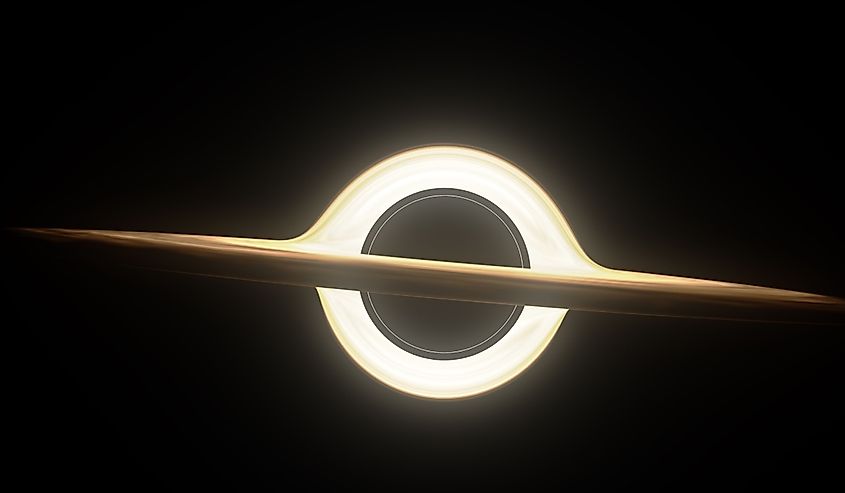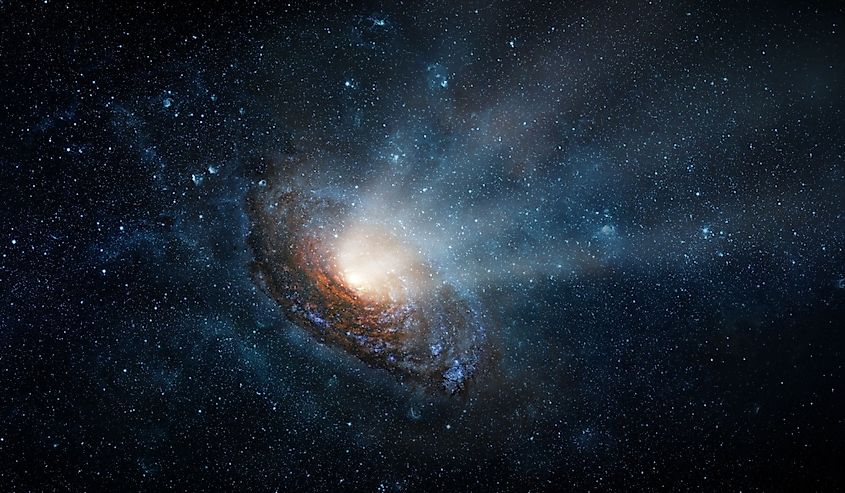
Black Holes Might be Defects in Space and Time
Black holes are objects in space that are powerful yet very little is understood about them. They have such strong gravitational pulls that anything sucked into them cannot escape; not even light nor radiation. Despite this basic mechanics of how black holes work, recent research has found objects in space that appear to us as observers as black holes, but with closer observation, seemingly allow for the escape and passage of light. These entities are called topological solitions which are stable defects in spacetime resembling black holes.
What are Black Holes and How do They Form?

Black holes are singularities in space with gravitational pulls so strong that nothing can escape from within them. The boundary line of the black hole is known as the event horizon and is generally considered the point of no return. Scientists and artists often render the event horizon as a bright ring around a circle of darkness. However, it's important to note that the event horizon is not a tangible boundary but a gravitational one; while one cannot touch it, there is simply no amount of energy or power you could use to escape the black hole once you do.
Black holes form when stars die and collapse under their own weight, triggering an explosion called a supernova. When the mass inside the sun's nuclear core is large enough, this process of imploding into a black hole is inevitable and irreversible based on our current knowledge and understanding. Black holes grow in size and gravitational pull as debris and objects in space, including other black holes, fall into their event horizon.
NASA defines two classes of black holes: stellar mass and supermassive. Stellar-mass black holes are smaller, often between three to dozens of times larger in mass than our Sun while supermassive black holes are 100,000 to billions of times larger in mass. We have more recent evidence to suggest that there are black holes in an in-between class, called intermediate-mass black holes, likely weighing between 100 and 10,000 times our sun's mass.
How Do We Know Black Holes Exist?

Because not even light nor radiation can escape from inside a black hole, and we (and our cameras) rely upon light (or comparable radiation) in order to see, how do we know that they exist? Einstein's theory of general relativity predicts black holes as singularities in time and space. We know that the dense breakdown of stars does occur since we have found evidence of neutron stars, which are in one state of decomposition before the breakdown into a black hole. If a star is able to remain in this state, it is unlikley that its core is dense enough to condense into a black hole.
The evidence we do have for black holes is evidence of particles, light, and radiation falling into the black hole. The Hubble Space Telescope has taken images of dusk discs circling dark objects that are millions and billions of times denser than our sun. In 2022, the Event Horizon Telescope captured the first image of a black hole in our galaxy, offering a clear picture of the light being sucked into the singularity. Our growing body of research and evidence highly supports our hypotheses about the existence of black holes, how they form, and how they work.
Topological Solitons and Defects in Spacetime

While Einstein's theory of General Relativity does not account for variances in black holes as singularities, String Theory holds a clue. Building from Einstein's theory, String Theory assumes subatomic particles are actually part of a minuscule stringlike fabric that makes up space-time. These strings vibrate in different directions, allowing for the transfer of gravity, electromagnetism, strong force, and weak force through spacetime. To date, String Theory's biggest limitation is its difficulty to objectively study and characterize as it remains predominantly a mathematical concept.
Despite this limitation, researchers at Johns Hopkins University recently published a paper in Physical Review D highlighting the similarities and differences between black holes and their döppleganger. Topological solitons, to a distant observer, appear to be of comparable size and have similar matter-scattering properties as black holes without the event horizon. These objects from far away seem to behave and look like black holes, but upon nearing them, it becomes apparent that light is not being sucked in by the topological soliton. Rather, light enters the topological soliton before being distorted and chaotically expelled from the lookalike black hole.
Although topological solitons are still just hypothetical objects, as we do not yet have real evidence of their existence, this mathematical modeling helps paint a picture of what gravitational objects other than black holes could be like. If real as described, these fake black holes would be stable defects in spacetime that are inherently part of the fabric of the universe, just as black holes are fundamental objects in spacetime. They are defects in that they don't require anything else to exist but just are.
Summary
Research on black holes themselves is on an upward trajectory, with our knowledge bed growing stronger and richer as our technology and understanding of the universe improve. Investigating mathematical and theoretical objects in our universe can help us understand what we do not know about space, explore out-of-reach entities we do not yet have the technology record with, and consider possible limitations of our current understanding of the universe. These initial topological soliton modelings indicate that we do not concretely know that we are looking at a black hole, as it offers potential false flags that we currently use as inherent markers of their presence. Further research and analysis are certainly necessary, but the introduction of this concept—that some black holes may actually be defects in spacetime that behave like black holes without their inescapable property—means that we are already well underway to better understand our cosmic neighborhood.











